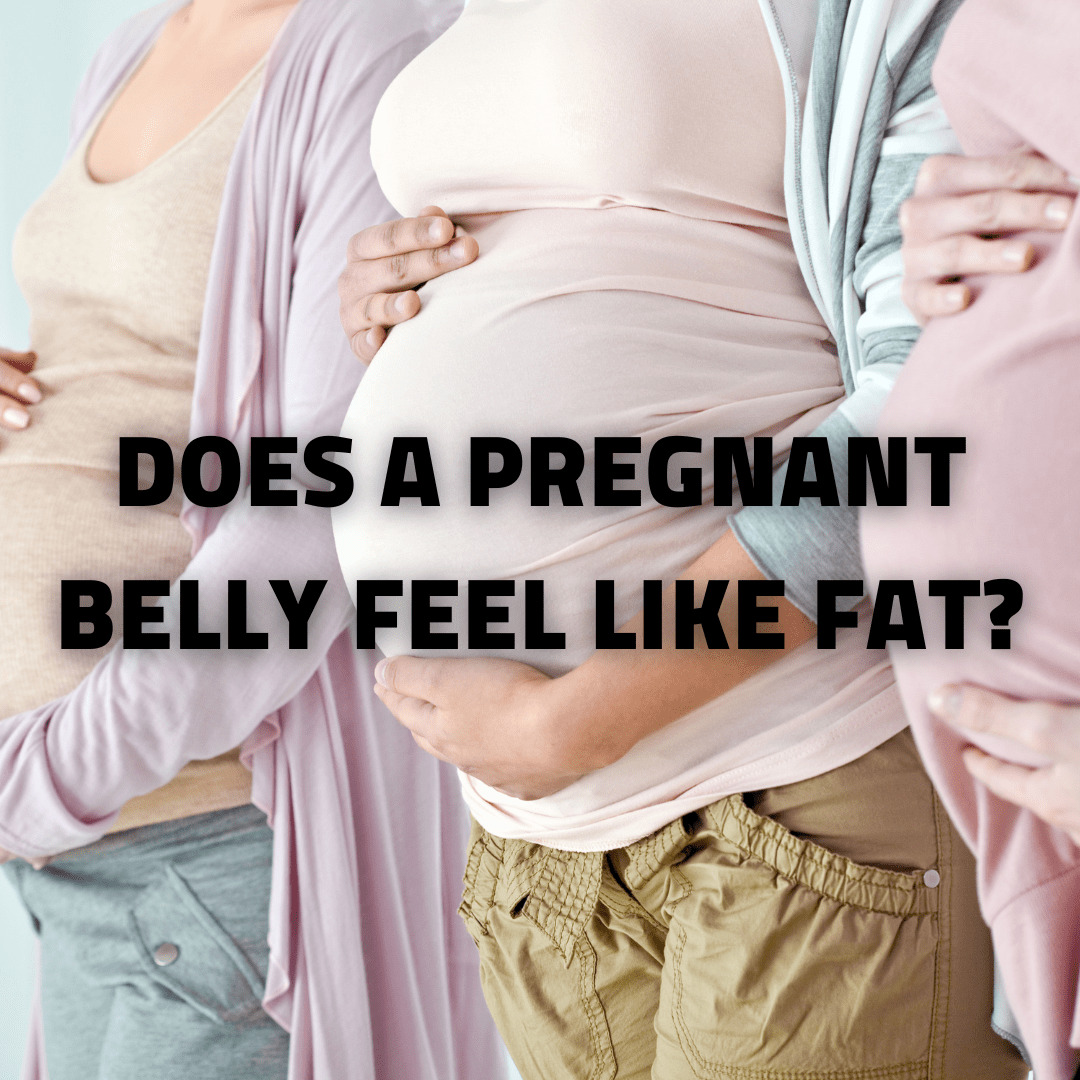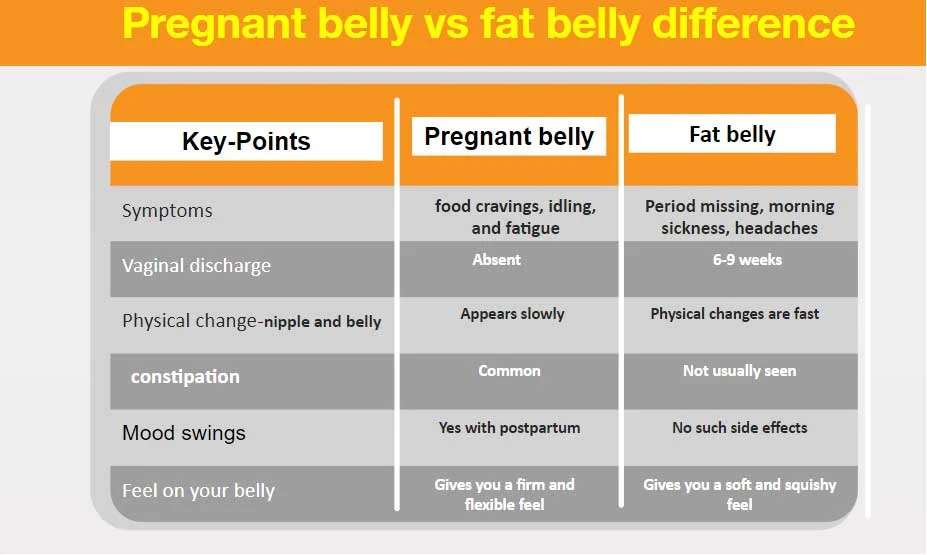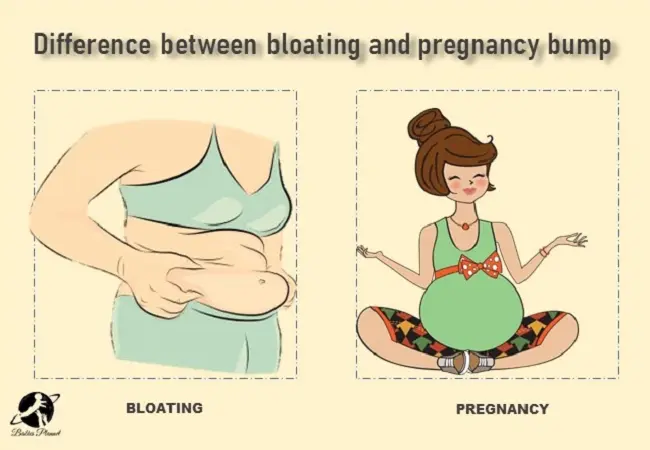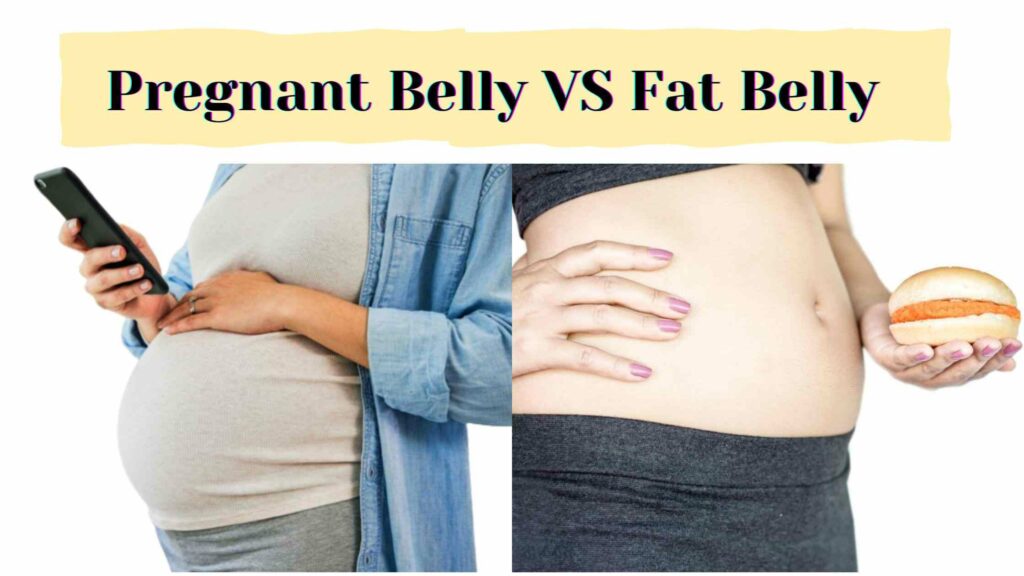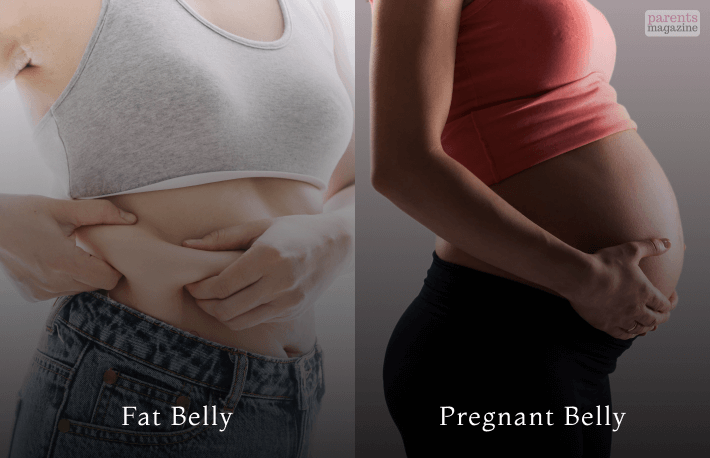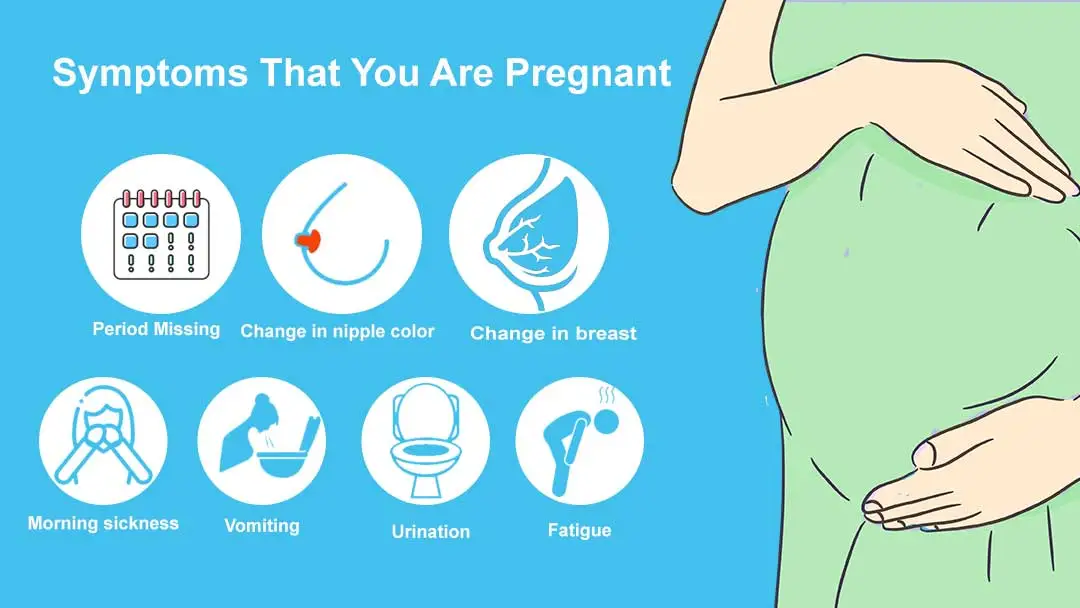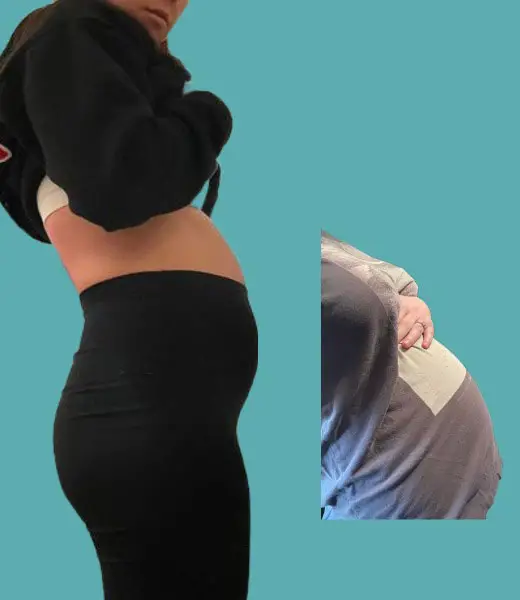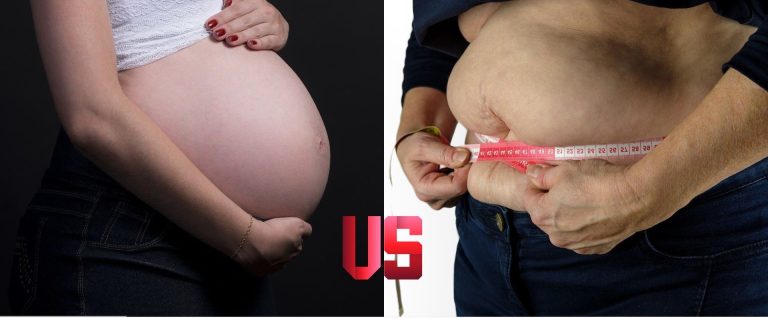Difference Between A Fat Belly And A Pregnant Belly
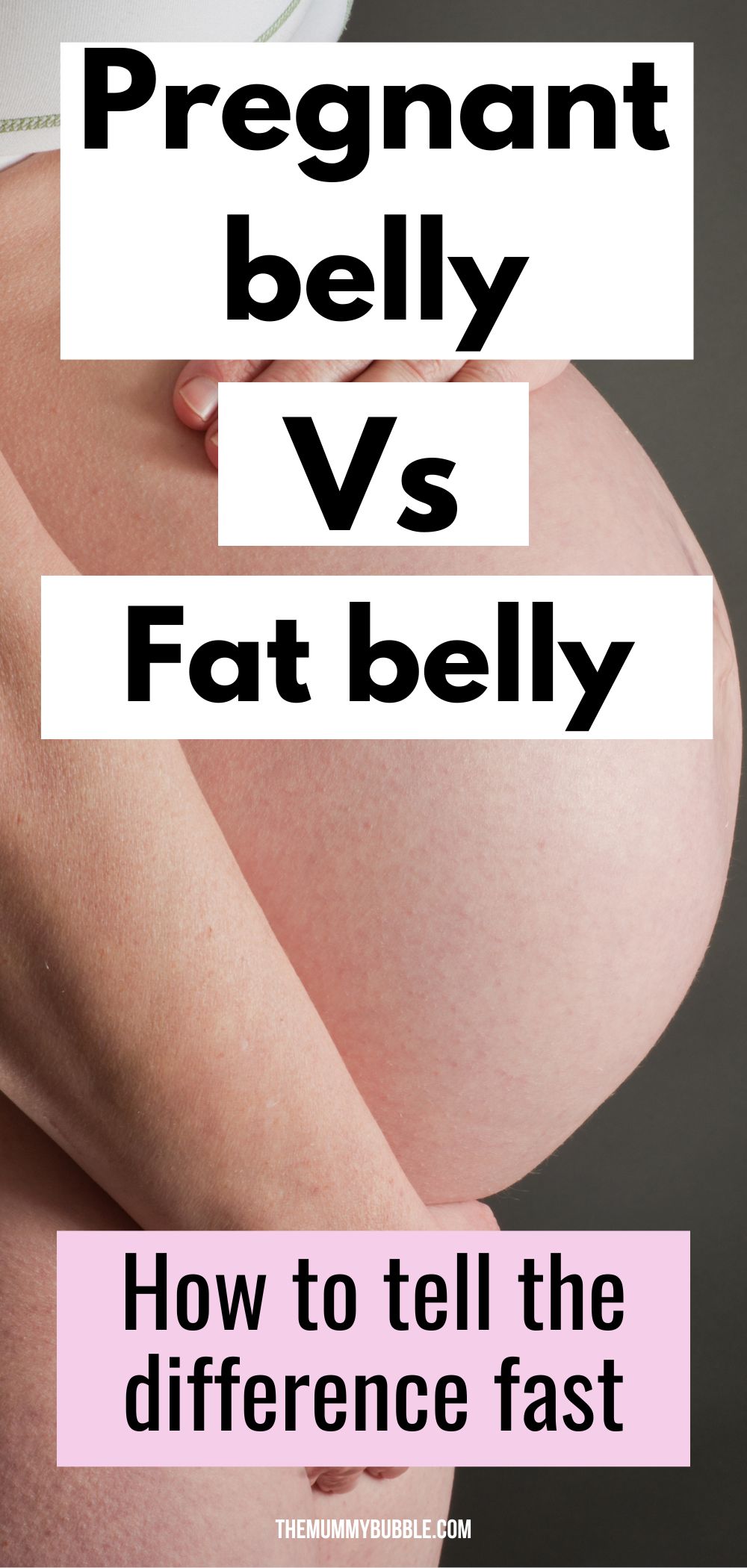
The afternoon sun streams through the cafe window, illuminating dust motes dancing in the air. A woman laughs, her hand instinctively resting on her rounded abdomen. Another woman, nearby, shifts uncomfortably in her seat, pulling at her blouse, self-conscious about her own belly. Is it just lunch, or is there something more to that curve?
Navigating the delicate social dance of interpreting a rounded belly can be tricky. This article aims to provide clarity on distinguishing between a fat belly and a pregnant belly, moving beyond superficial observations to understand the underlying physiological differences and offering respectful communication strategies.
Understanding the "Fat Belly"
The term "fat belly," while colloquial, generally refers to abdominal fat, which can be subcutaneous (under the skin) or visceral (around the organs). Subcutaneous fat is noticeable and pinchable, contributing to an overall softer appearance.
Visceral fat, however, poses a greater health risk. According to the Mayo Clinic, visceral fat is linked to increased risks of heart disease, type 2 diabetes, and other metabolic disorders.
Factors Contributing to Abdominal Fat
Several factors contribute to the accumulation of abdominal fat. Diet, particularly one high in processed foods, sugary drinks, and unhealthy fats, plays a significant role.
A sedentary lifestyle exacerbates the problem. Genetics, stress, and insufficient sleep also influence fat distribution.
Hormonal changes, especially during menopause, can shift fat storage towards the abdominal area for women, according to the National Institutes of Health (NIH).
The Journey of a Pregnant Belly
A pregnant belly represents a profound physiological transformation. It houses a developing human being and involves complex hormonal shifts.
The growing uterus is the primary driver of the expanding abdomen. As the fetus develops, the uterus stretches, pushing other organs aside and altering the body's silhouette.
Key Indicators of Pregnancy
Beyond the visual changes, early pregnancy comes with a cascade of other symptoms. Missed periods, nausea (morning sickness), fatigue, and breast tenderness are common indicators.
Hormonal changes, particularly the increase in hCG (human chorionic gonadotropin), are responsible for many of these symptoms. A home pregnancy test detects hCG in urine.
Medical professionals rely on various methods to confirm pregnancy, including urine or blood tests and ultrasounds. According to the American Pregnancy Association, an ultrasound can typically detect a gestational sac as early as 5 to 6 weeks after the last menstrual period.
Distinguishing Between the Two
While both can result in an enlarged abdomen, the underlying causes and associated characteristics differ significantly. A fat belly tends to be more uniformly distributed.
A pregnant belly often has a firmer feel, especially as the pregnancy progresses. The shape may be more distinctly rounded, particularly in the lower abdomen.
Associated symptoms are crucial differentiators. The absence of pregnancy-related symptoms, like morning sickness or a missed period, points away from pregnancy.
Beyond Appearance: Listening to the Body
Paying attention to your overall health and well-being is essential. If you're concerned about abdominal fat, consult with a healthcare professional or registered dietitian.
They can assess your individual needs and recommend strategies for healthy weight management. These may include dietary changes, exercise programs, and stress reduction techniques.
If you suspect you might be pregnant, taking a pregnancy test is the first step. Early prenatal care is crucial for both the mother and the developing baby.
The Social Etiquette of Belly Gazing
Commenting on someone's body is generally considered impolite. Assumptions about pregnancy can be particularly insensitive and potentially hurtful.
Unless someone explicitly shares that they are pregnant, it's best to avoid making assumptions. A simple, "You look well," is always a safer and more respectful option.
Focusing on compliments related to personality, accomplishments, or attire avoids potential pitfalls. Remember that everyone's body is different, and factors like bloating or clothing can alter appearances.
The Broader Context: Body Image and Acceptance
Our society often places undue emphasis on appearance, leading to self-consciousness and body image issues. Cultivating self-acceptance is a vital part of overall well-being.
Regardless of whether someone has a "fat belly" or a "pregnant belly," kindness and respect are paramount. Promoting body positivity and celebrating diversity are essential steps towards a more inclusive society.
Focusing on health and well-being, rather than solely on appearance, empowers individuals to make informed choices. Remember, health is a journey, not a destination.
Conclusion: Empathy and Understanding
Understanding the difference between a fat belly and a pregnant belly extends beyond mere physical distinctions. It encompasses empathy, respect, and a broader understanding of the human experience.
By being mindful of our language and assumptions, we can create a more supportive and compassionate environment for everyone. The key is to approach each other with kindness and acknowledge the diverse paths we all walk.
Ultimately, whether a rounded abdomen signifies the joy of impending motherhood or the need for healthier habits, it deserves to be treated with dignity and understanding. Embrace the beauty of individual differences and prioritize genuine connection over superficial judgments.



